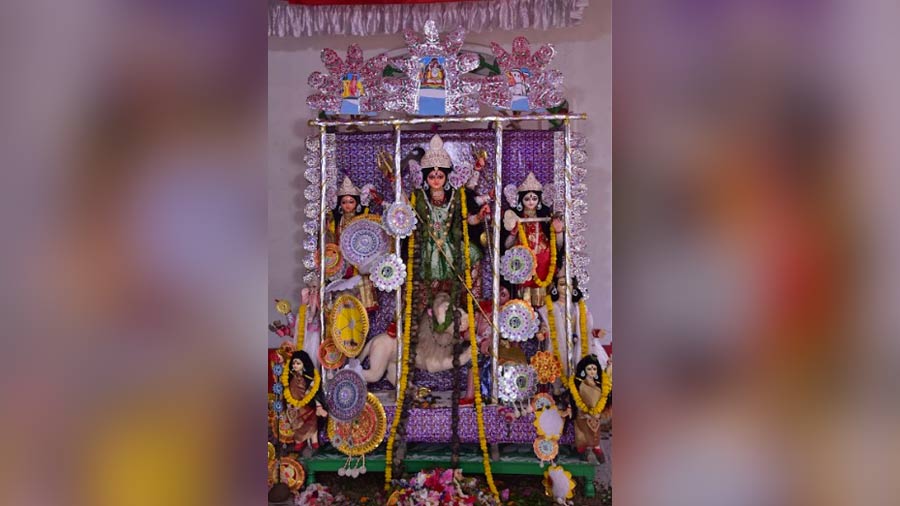Now that everyone has to comply with environment-friendly activities, the Durga Puja enthusiasts of Kolkata have been robbed off a picture-perfect scenario – the Durga bhasan on the ghats of Hooghly. These days, as soon as the idol is immersed in the river, a crane comes into action to pull up the clay deity out of the water. However, as distasteful as it may look, the activity is a part of Ganga cleaning project and cannot be argued upon.
Being a city resident of West Bengal, there is always a hidden wish to witness the immersion of the Goddess. To fulfil the desire, where else can one go but run to rural Bengal. There are several pockets where, till date, Goddess immersion rituals take place in traditional style and many of these are not even present in the cyberworld for reference.
Biltora is one such non-descript village featuring a unique style of Durga immersion. The village is located 3 km north of Chharrah village in Purulia II subdivision of Purulia district under Chharrah Dumdumi Gram Panchayat. Biltora houses a stone-built Jain Temple along with ruins of similar temples. Chharrah, 8 km north east of Purulia, is famous for remains of a World War II era runway.
Biltora has three Durga Temples. The one centrally located, with a relatively more open space in its front, draws more people. All are flat-roof temples. The main temple has statues of Shiva Parvati, Radha Krishna, Hanuman etc on its top. The deities are all in ekchala style. Every year, Durga Puja is celebrated with much enthusiasm in all the three temples. Though the festival is celebrated in a low-key fashion, there is one rare practice that is still prevalent in this village.

On Dashami, the goddess is put on a bullock cart by the locals before they take the idol for immersion
On Bijoya Dashami, the Goddess is brought down from the respective temples and placed onto the open area of the temple premises. Once sindoor khela is over, three bullock carts are arranged — one each, in front of the three temples. The idols are carried by the men folk and placed on the cart securely. One would expect that the carts would be drawn by upcountry bullocks and taken to the nearby waterbody. On the contrary, it is the menfolk who take the three bullock carts in procession nearly a distance of 3 km through a route mixed of village road, metal road and grass fields. There is no band party or people dancing in the procession. but only village people pulling the carts in utter respect and dignity, accompanied by a few village drummers.

As the goddess gets ready for the bullock cart ride in front of the temple, women get busy with Sindoor Khela
Many villages around Biltora have replaced bullock carts with tractors; procession takes place with lamps and a huge euphoria influenced by urban culture. But the residents of Biltora still hold on to their roots and when the three deities are taken in a procession in their respective carts, we get a feeling that simplicity can also be a treat for the eyes.
The pathway is lined with palm trees, followed by jungle on both sides, open fields with small ponds around. The procession takes a turn from a small culvert and after walking for some time, takes a break on a grassland near the destined waterbody for immersion. Here, nearby villagers come and bid adieu to the Goddess. Local village entertainers conduct small shows in front of the deity. Finally, the three deities are immersed along with the bullock carts in the middle of the waterbody. This needs quite a lot of manpower and energy.

The procession of carts, carrying the Durga idols, looks pretty in the rural background
By the time the three deities are immersed, it is already dusk in Purulia. One cannot help but think that with the passage of time such simple practices have become so rare that to observe them from close quarters, one has to travel around 300 km from Kolkata.
The immersion procession of Biltora has been attracting photographers – both professional and amateurs — every year on Bijoya Dashami. The proceedings of the procession usually start at around 2:30 pm. Since it becomes very hot and humid around this time, and involves a lot of running around to take good shots, it is advisable to stay the night in Purulia and leave the next morning.


